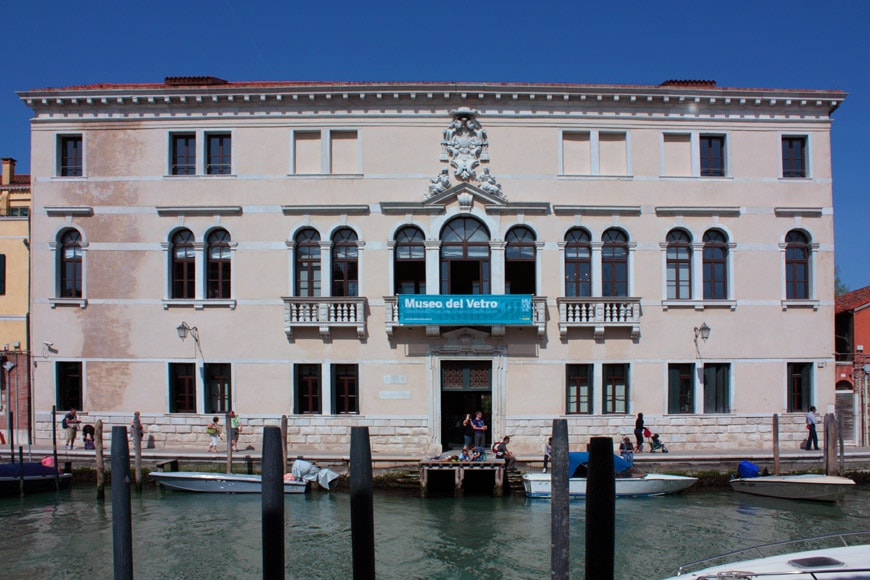The Museo del Vetro (Murano Glass Museum) is a museum on the island of Murano, Venice, dedicated to the long history of artistic glass-making in the Venetian lagoon.
History and location
The museum is housed in Palazzo Giustinian, a 17th-century palace originally built in a late-Gothic architectural style as a private residence.
The building is located on the small island of Murano, which can be reached by water bus from central Venice in about 10 minutes from the Fondamente Nuove pier and 20 minutes from the Santa Lucia railway station.
In February 2015, the Murano Glass Museum re-opened after major enlargement and renovation work.
The museum was founded in 1861 by the municipality of Murano (at the time the island was not yet part of the city of Venice) in order to document the history and showcase works of Venetian glass artistry, whose origins date back to the 10th century. Subsequently, the museum’s collection has been expanded with a view to present artisanal glass-making history and techniques in a broader way.
Collection and permanent exhibition
The collection of glass art of the Murano Glass Museum, one of the largest in the world, is presented in a permanent exhibition divided into seven chronological sections, from antiquity to the present.
At the Beginning includes ancient Roman and Hellenistic artifacts dating from the 1st century AD to the fall of the Roman Empire, as well as pieces that testify to the origins of Venetian glass-making art in the early Middle Ages.
The Golden Age presents objects – mostly vases and drinking cups made with various vitreous paste forming and coloring techniques – dating from the 14th century to the 17th century, a period in which the art of glass fully developed in Venice also thanks to the work of innovators such as Angelo Barovier in the 15th century, and Filippo Catani della Sirena in the 16th century.
The sections dedicated to the 18th century and early 19th century illustrate a period in which the local glass markers suffered from the competition with Bohemian manufacturers and nevertheless were able to create magnificent objects of unprecedented quality, such as the famous Venetian Baroque crystal chandeliers, the Murano mirrors, and those fashion accessories made in multicolored glass popularly known today as murrine.
The last three parts of the exhibition cover the “revival” of Murano’s glass which, started in the second half of the 19th century, still endures these days. The galleries present both classic-style and Art Nouveau pieces, together with modern-style and contemporary works produced by glass furnaces such as Cappellin & Venini, the Toso brothers, Artisti Barovier, and Seguso and designed by acclaimed artists and designers, including Vittorio Zecchin, Carlo Scarpa, Tapio Wirkkala, Yoichi Ohira, and Dale Chihuly.
The Glass Museum in Murano, which features a lively program of temporary exhibitions and special events, also includes a 1,500-volume library focused on glass history and manufacturing techniques and a bookshop.
Glass artworks and archaeological artifacts on display under a loggia on the ground floor of the Venice Glass Museum in Murano
Venice Glass Museum, Murano; views of the permanent exhibition
All photos by Romano Greco, courtesy of MuVE – City of Venice
Cover image, the main facade of the Venice Glass Museum on Murano’s Grand Canal
